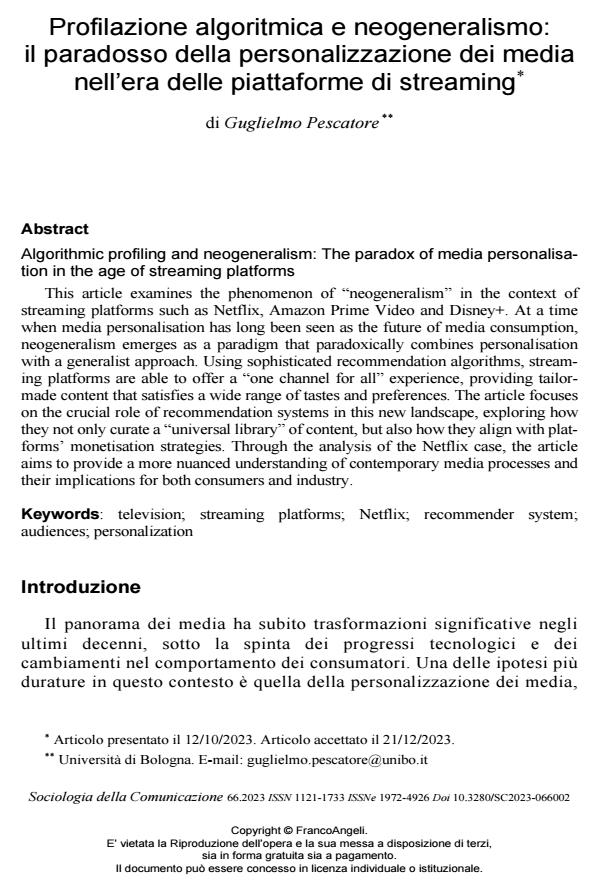Profilazione algoritmica e neogeneralismo: il paradosso della personalizzazione dei media nell’era delle piattaforme di streaming
Titolo Rivista SOCIOLOGIA DELLA COMUNICAZIONE
Autori/Curatori Guglielmo Pescatore
Anno di pubblicazione 2024 Fascicolo 2023/66
Lingua Italiano Numero pagine 21 P. 21-41 Dimensione file 338 KB
DOI 10.3280/SC2023-066002
Il DOI è il codice a barre della proprietà intellettuale: per saperne di più
clicca qui
Qui sotto puoi vedere in anteprima la prima pagina di questo articolo.
Se questo articolo ti interessa, lo puoi acquistare (e scaricare in formato pdf) seguendo le facili indicazioni per acquistare il download credit. Acquista Download Credits per scaricare questo Articolo in formato PDF

FrancoAngeli è membro della Publishers International Linking Association, Inc (PILA)associazione indipendente e non profit per facilitare (attraverso i servizi tecnologici implementati da CrossRef.org) l’accesso degli studiosi ai contenuti digitali nelle pubblicazioni professionali e scientifiche
This article examines the phenomenon of “neogeneralism” in the context of streaming platforms such as Netflix, Amazon Prime Video and Disney+. At a time when media personalisation has long been seen as the future of media consumption, neogeneralism emerges as a paradigm that paradoxically combines personalisation with a generalist approach. Using sophisticated recommendation algorithms, streaming platforms are able to offer a “one channel for all” experience, providing tailor-made content that satisfies a wide range of tastes and preferences. The article focuses on the crucial role of recommendation systems in this new landscape, exploring how they not only curate a “universal library” of content, but also how they align with platforms’ monetisation strategies. Through the analysis of the Netflix case, the article aims to provide a more nuanced understanding of contemporary media processes and their implications for both consumers and industry.
Parole chiave:television; streaming platforms; Netflix; recommender system; audiences; personalization
Guglielmo Pescatore, Profilazione algoritmica e neogeneralismo: il paradosso della personalizzazione dei media nell’era delle piattaforme di streaming in "SOCIOLOGIA DELLA COMUNICAZIONE " 66/2023, pp 21-41, DOI: 10.3280/SC2023-066002